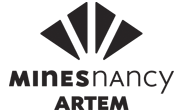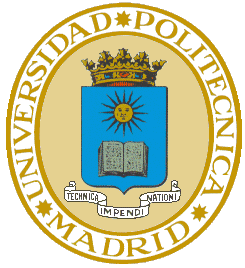
A grande école is a specialized top-level educational institution in France and some other previous French colonies such as Morocco or Tunisia. Grandes écoles are part of an alternative educational system that operates alongside the mainstream French public university system, and take the shape of institutes dedicated to teaching, research and professional training in either pure natural and social sciences, or applied sciences such as engineering, architecture, business administration, or public policy and administration.

The ENSTA Paris, officially École nationale supérieure de techniques avancées, is a French graduate school of engineering. Founded in 1741, it is the oldest "grande école" in France. It is located in Palaiseau in the south of Paris, on the Paris-Saclay campus, and is a constituent faculty of the Polytechnic Institute of Paris. In 2021, 180 engineers graduated from the school.

Mines Nancy is one of the leading French engineering Grandes Écoles.

The University of Toulouse is a community of universities and establishments (ComUE) based in Toulouse, France. Originally it was established in 1229, making it one of the earliest universities to emerge in Europe. Suppressed during the French Revolution in 1793, it was refounded in 1896 as part of the reorganization of higher education. It was finally abolished in 1969, giving birth to the three current universities: Toulouse 1 Capitole University, University of Toulouse-Jean Jaurès and Toulouse III - Paul Sabatier University. The ComUE in the Toulouse region was known as Federal University of Toulouse Midi-Pyrénées. On January 1, 2023, the university was renamed as the University of Toulouse.

The Technical University of Madrid or sometimes called Polytechnic University of Madrid is a public university, located in Madrid, Spain. It was founded in 1971 as the result of merging different Technical Schools of Engineering and Architecture, originating mainly in the 18th century. Over 35,000 students attend classes during the year.

The École Nationale Supérieure d'Électrochimie et d'Électrométallurgie de Grenoble, or ENSEEG, was one of the French Grandes écoles of engineering. It has been created in 1921 under the name Institut d’électrochimie et d’électrométallurgie (IEE). The name ENSEEG has been chosen in 1948 and ENSEEG has been part of Grenoble Institute of Technology since its creation in 1971. Therefore, the name INPG-ENSEEG has also been commonly used.

The École nationale supérieure d'informatique et de mathématiques appliquées, or Ensimag, is a prestigious French Grande École located in Grenoble, France. Ensimag is part of the Institut polytechnique de Grenoble. The school is one of the top French engineering institutions and specializes in computer science, applied mathematics and telecommunications.
The École Nationale Supérieure d'Ingénieurs des Systèmes Avancés et Réseaux (Esisar) is an engineering school of the Grenoble Institute of Technology.

The École nationale supérieure d'ingénieurs de constructions aéronautiques (ENSICA), meaning National Higher School of aeronautical constructions, was a French engineering school founded in 1945. It was located in Toulouse. In 2007, Ensica merged with Supaéro to form the Institut supérieur de l'aéronautique et de l'espace (ISAE).

Toulouse Institute of Technology is a French university cluster based in Toulouse, France, part of University of Toulouse. It was founded in 1969. The institute is composed of seven schools and 17 research laboratories. The institute delivers master's degrees and Ph.D. It is a member of Institut au service du spatial, de ses applications et technologies.
National Polytechnic Institute of Lorraine is a French technological university system, based in Nancy. It is under the Academy of Nancy and Metz.
French university associations known as "pôles de recherche et d'enseignement supérieur" were a form of higher-level organization for universities and other institutions established by French law in effect from 2007 to 2013. The 2013 Law on Higher Education and Research (France) discontinued the PRES; these have been largely replaced by the new Communities of Universities and Institutions. The list below indicates the status of those institutions designated as PRES or related associations before the 2013 law took effect. See the list of public universities in France for the current status of these institutions.

Institut Mines-Télécom (IMT) is a French public academic institution dedicated to Higher Education and Research for Innovation in the fields of engineering and digital technology, organized as a Collegiate University. Created in 1996, it was originally known as the "Groupe des écoles des télécommunications", or GET, followed by the "Institut Télécom". The Mines schools, which were placed under the administrative supervision of the Ministry of Industry, joined the Institut in March 2012 when it took on its current name and gained the status of Grand établissement. It combines high academic and scientific legitimacy with a practical proximity to business and a unique positioning in 3 major transformations of the 21st century: Digital Affairs, Energy and Ecology, and Industry. Its training and research for innovation are rolled out in the Mines and Télécom Graduate Schools. The Institut falls under the administrative aegis of the General Council for the Economy, Industry, Energy and Technologies.

The Escola Politécnica of the University of São Paulo is an engineering school at the University of São Paulo (USP) in São Paulo, Brazil.

The École Nationale Supérieure de Physique, Électronique et Matériaux is a Grande École located in Grenoble, France. Phelma is part of Grenoble Institute of Technology. The school specializes in physics, electronics and materials.

The École nationale supérieure d'électrotechnique, d'électronique, d'informatique, d'hydraulique et des télécommunications (ENSEEIHT) is a French engineering school which offers education in Electrical Engineering, Electronics, Computer Science, Hydraulics and Telecommunications.

Bordeaux Institute of Technology- ENSEIRB-MATMECA School of Engineering is a French Engineering Grande École located in Bordeaux and specialized in Electrical Engineering, Electronics, Computer Science, Telecommunications, Mechanical Engineering and Mathematics.

The École nationale supérieure de l'énergie, l'eau et l'environnement(Ense3) is one of the engineering schools of the Institut National Polytechnique de Grenoble. As a grande école, students are admitted through a nationwide competitive examination. It was formed by the merger of the École nationale supérieure d'hydraulique et de mécanique de Grenoble (ENSHM) and the École nationale supérieure d'ingénieurs électriciens de Grenoble (ENSIEG).

Brigitte Plateau is a French computer scientist. A former student of the École Normale Supérieure at Fontenay-aux-Roses majoring in Mathematics, she is a Doctor of Information Studies. A University Professor at Grenoble Institute of Technology since 1988, since February 2012 she has been the General Administrator of the Grenoble INP cluster.
École nationale supérieure de génie industriel (ENSGI) a French engineering College created in 1990.



















